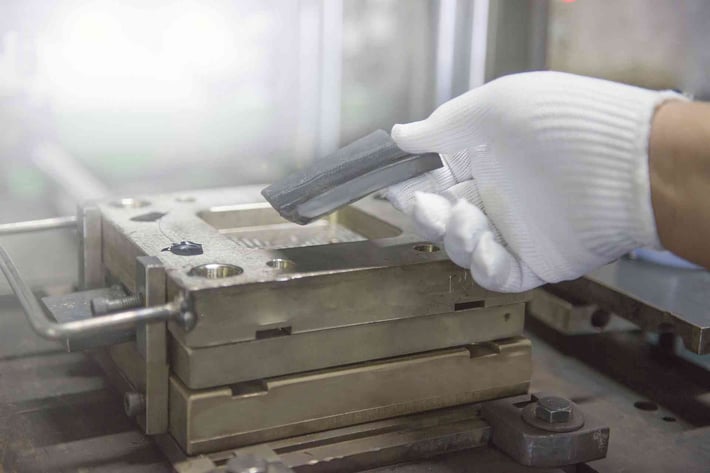
Compression and injection molding services are sometimes compared by customers in search of the best production method for their custom plastic parts. However, due to the nature of the unique molding processes, compression and injection molding are generally optimized for quite different types of projects.
In short, injection molding services are much better-suited for the manufacturing of complex parts with intricate designs. It’s also generally the choice for high-volume manufacturing. Compression molding, in contrast, is ideal for large plastic components with simple geometries, such as sheets or panels, or with thermoset (curing) materials like silicone.
Understanding Your Options for Custom Plastic Molding Services
If you’re somewhat new to the industry and want to learn the basics of the injection molding process, check out AIM’s Brief Introduction to Plastic Injection Molding page. Also, feel free to check out our Plastic Injection Molding vs. Vacuum Forming and Injection Molding vs. Extrusion blogs to learn how injection molding compares to other common manufacturing solutions.
How does the compression molding process work?
Like injection molding and thermoforming, compression molding uses heat and pressure to mold molten plastic into custom shapes. However, the molds used are quite different in design than those used in the other processes.
While injection molds more commonly open & close in a horizontal plane, compression molds more commonly open & close in a vertical plane to enable the preformed, softened material to rest in the tool before closing. Both sections of mold are generally preheated to maintain consistent temperature and prevent rapid cooling.
The mold halves are then clamped together, leaving a small flash gap for excess plastic to escape. A mechanical or hydraulic press applies immense pressure to the mold, forcing the molten material into a densely-formed part. The mold is finally cooled before opening while the material cures, and the product is removed for further processing. Most often, some parting line flash will need to be trimmed.
Some common advantages of compression molding include:
- The compression molding process does not produce internal pressures nearly as high as the injection molding process. Compression molds therefore do not have to be as robust, often reducing the initial cost of mold manufacturing.
- Due to the generally lower-cost production of the molds, compression molding can be ideal for many low-volume parts runs for which injection mold tooling is cost prohibitive.
- Compression molding services are often employed for manufacturing composite panels. These products require unique types of sheet molding compounds that cannot be produced through the injection molding process.
The Benefits of Plastic Injection Molding Compared to Compression Molding
For many projects, injection molding services offer numerous benefits over compression molding options:
- Injection molding is generally the ideal manufacturing method for high-volume parts runs. Once the initial mold and tooling are manufactured, you can cost-effective produce parts in shorter cycles and higher cavitation.
- The injection molding process is highly automatable. Automation allows for more consistent manufacturing results and reduced labor costs.
- Injection molding produces more structurally solid, highly durable plastic parts with uniform strength – much more consistently than the compression molding process.
- Plastic injection molding is also more capable of producing parts of high complexity, such as those with intricate shapes or extremely tight tolerances.
More than 30 Years of Quality Plastic Injection Molding Solutions
One of the Denver, Colorado area’s premier injection molding companies since 1993, AIM Processing provides our customers with invaluable industry experience and the customer service to back it up. An ISO 9001:2015 registered American manufacturer, our company is committed to delivering superior quality with every product.

 SINCE 1993 MADE IN USA
SINCE 1993 MADE IN USA 

